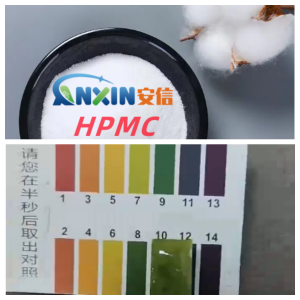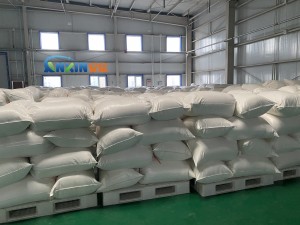Hydroxypropyl methylcellulose (HPMC) is an important nonionic cellulose ether. Due to its excellent solubility, film-forming properties, thickening properties, and stability, it is widely used in industries such as construction materials, food, pharmaceuticals, and daily chemicals. In practical applications, HPMC is often exposed to environments with varying pH levels. Therefore, studying its stability under different pH conditions is crucial for product formulation design and performance optimization.
1. Relationship between HPMC’s Molecular Structure and pH
HPMC is derived from natural cellulose modified by methylation and hydroxypropylation. Its structure contains no charged ionic groups, and therefore behaves as a nonionic polymer in aqueous solution. Unlike anionic or cationic cellulose ethers, HPMC is relatively stable in most neutral or weakly acidic and alkaline environments, and does not precipitate or degrade due to ionic reactions. This characteristic makes it particularly suitable for use in pharmaceutical excipients, food stabilizers, and building mortars.
2. HPMC Stability in Acidic Conditions
In strongly acidic environments (pH < 4), HPMC molecular chains may be affected by acid-catalyzed hydrolysis. Prolonged exposure can lead to a decrease in the degree of polymerization, manifesting as a decrease in viscosity and reduced solution clarity. Acidic degradation of HPMC is particularly pronounced under high temperatures. However, in weakly acidic conditions (pH 4–6), HPMC remains largely stable and is commonly used in the formulation of acidic beverages, juice suspensions, and certain sustained-release pharmaceutical tablets.
3. HPMC Stability in Alkaline Conditions
In alkaline environments (pH > 10), HPMC exhibits relatively poor stability. Strong alkalis can disrupt the ether bonds of cellulose molecules, leading to chain breakage and performance degradation. HPMC degradation accelerates with increasing alkali concentration and temperature, manifesting as a significant decrease in solution viscosity. Therefore, while HPMC can provide short-term benefits in water retention, thickening, and workability in strongly alkaline systems (such as cement hydration solutions), long-term exposure can lead to instability. In alkaline building material systems such as cement mortar, HPMC’s alkali resistance can be enhanced by controlling the dosage and selecting a specific degree of substitution.
4. Optimal Stability Under Neutral Conditions
HPMC exhibits optimal stability in a near-neutral environment (pH 6–8). Here, the molecular chains are not significantly damaged by acids or alkalis, and aqueous solutions maintain transparency, stable viscosity, and good rheological properties for extended periods. Therefore, HPMC is more suitable for use in neutral environments for pharmaceutical tablet coatings, food emulsion stabilization, daily chemical detergents, and most industrial suspension systems.
5. Other Factors Affecting HPMC Stability
In addition to pH, temperature, ionic strength, and oxidative environments also affect HPMC’s stability. For example, it is susceptible to hydrolysis under high temperature and high acid conditions and is destroyed in the presence of strong oxidants. Therefore, buffers and antioxidants are often used in applications, or molecular modifications are used to improve its tolerance.
6. Application and Optimization Recommendations
Building Materials: For highly alkaline cement mortars, choose HPMC with a high degree of substitution and alkaline resistance. Optimize the dosage to balance workability and durability.
Food and Beverages: When used in acidic beverages, avoid long-term storage at high temperatures to prevent viscosity loss.
Pharmaceutical Preparations: In sustained-release formulations, selecting an appropriate pH range ensures film stability and drug release performance.
Daily Chemical Industry: Formulations are often performed in weakly acidic or neutral conditions. HPMC maintains long-term stability and is ideal for thickening, moisturizing, and film formation.
HPMC exhibits significant stability differences under different pH conditions: It is most stable in neutral environments and also performs well in weakly acidic and weakly alkaline conditions, but degrades under strong acidic and alkaline conditions. Therefore, in practical applications, it is important to carefully select the type and formulation of HPMC based on the intended use environment to maximize its performance and extend its service life.
Post time: Sep-27-2025

